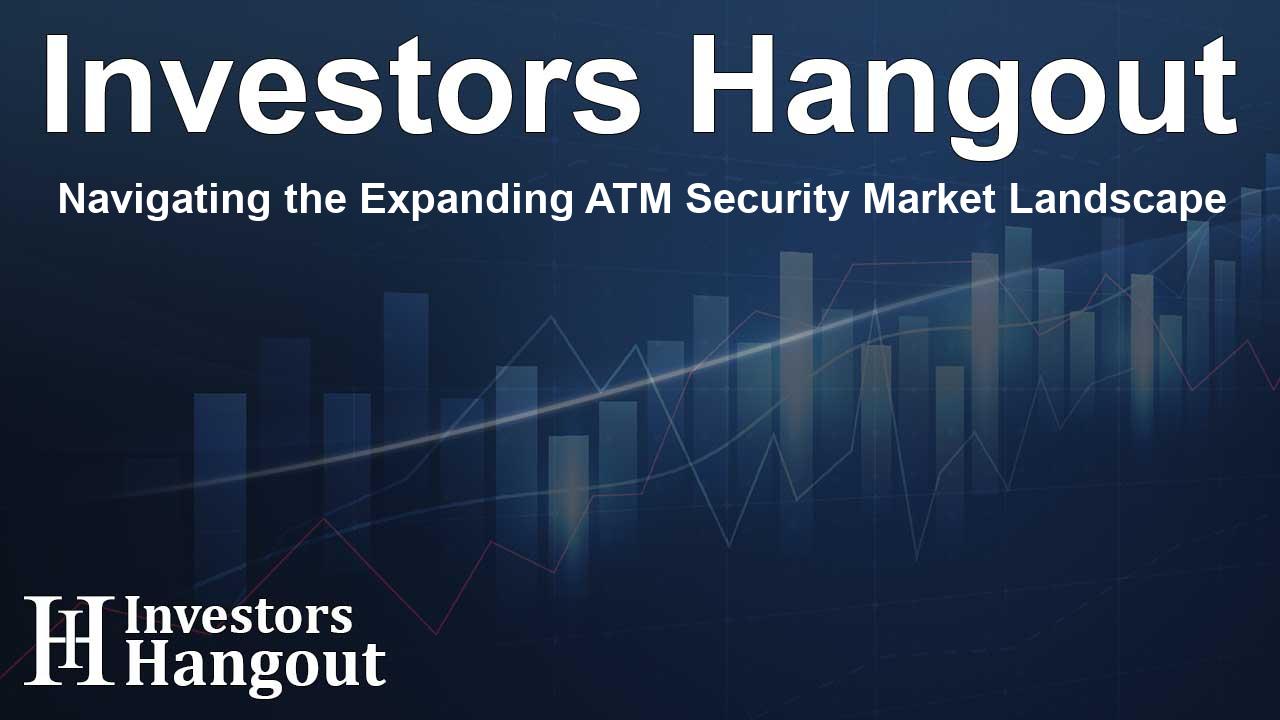Navigating the Expanding ATM Security Market Landscape

Overview of ATM Security Market Trends
The Automated Teller Machine (ATM) Security Market is witnessing significant growth, driven by the increasing demand for innovative security solutions. This growth is primarily influenced by advancements in technology and the rising necessity for secure banking transactions. Industry experts estimate that the market, valued at approximately USD 23.25 billion in the previous year, is projected to reach around USD 32.69 billion by 2034, experiencing a robust compound annual growth rate (CAGR) of 6.8% during the forecast period.
Growth Drivers in the ATM Security Sector
ATMs are an essential part of everyday banking, providing users with convenient access to cash and other banking services. The expanding adoption of ATMs poses a corresponding need for higher security standards. Technological innovations, such as biometric systems and anti-skimming devices, have significantly bolstered ATM security, making it essential to protect consumer transactions from sophisticated fraud techniques.
The implementation of complex security protocols is crucial as digital payment methods grow in popularity yet cash still plays a vital role in financial transactions. As ATMs are increasingly targeted for fraud through card skimming and malware attacks, financial institutions strive to improve their security measures to combat these threats effectively.
Challenges Facing the ATM Security Market
While the growth of the ATM security market is promising, it is not without its challenges. Financial institutions are burdened with the increased costs of implementing advanced security measures, which can include seismic sensors, GPS monitoring, and embedded cameras. Modernizing ATMs, such as transitioning from outdated operating systems, also presents a significant financial hurdle.
Furthermore, with the rise of various payment methods like credit cards and mobile payments, reliance on cash transactions may potentially decline, influencing the demand for ATMs in the coming years.
Regulatory Influences on ATM Security
Another significant aspect influencing the ATM security market is the stringent regulatory environment. Financial institutions and ATM operators are required to adhere to guidelines like the Payment Card Industry Data Security Standard (PCI DSS). This necessitates continuous investments in comprehensive security solutions to protect personal data and comply with legal requirements.
Moreover, compliance with data privacy laws such as the General Data Protection Regulation (GDPR) in Europe places further emphasis on establishing strong security measures. These regulations drive innovation in designing better ATM security systems, compelling stakeholders to allocate resources thoughtfully.
Regional Insights and Market Opportunities
The global ATM Security Market is broadly segmented by region, with North America expected to maintain the largest market share. However, Asia Pacific is anticipated to exhibit the highest growth rate due to a rising awareness of security threats and an expanding ATM network. Europe follows closely, leveraging its own advancements in security technologies.
Emerging markets present lucrative opportunities as ATM usage proliferates. The demand for secure ATMs in these regions is driven by ongoing digital transformation and the evolution of consumer expectations regarding banking services.
Conclusion
The ATM Security Market is poised for considerable expansion over the next decade. As technology evolves, the need for advanced security solutions will drive investments in comprehensive security measures. By recognizing trends and challenges, banking institutions can better prepare themselves to enhance ATM security and ensure the safety of consumer transactions, thus navigating an ever-changing financial landscape effectively.
Frequently Asked Questions
What is the projected growth rate of the ATM Security Market?
The ATM Security Market is projected to grow at a CAGR of 6.8% and reach approximately USD 32.69 billion by 2034.
What factors are driving the demand for ATM security solutions?
Advancements in technology, increasing ATM fraud incidents, and the need for compliance with regulatory standards are major factors driving demand.
How do regulatory requirements impact the ATM Security Market?
Regulatory requirements mandate financial institutions to invest in robust security measures, hence propelling growth in the ATM security segment.
Which regions are forecasted to show the highest growth in ATM security?
The Asia Pacific region is expected to exhibit the maximum growth potential in the ATM security market.
What challenges does the ATM security sector face?
Challenges include increasing operational costs for security enhancements and potential declines in cash demand due to emerging payment alternatives.
About The Author
Contact Henry Turner privately here. Or send an email with ATTN: Henry Turner as the subject to contact@investorshangout.com.
About Investors Hangout
Investors Hangout is a leading online stock forum for financial discussion and learning, offering a wide range of free tools and resources. It draws in traders of all levels, who exchange market knowledge, investigate trading tactics, and keep an eye on industry developments in real time. Featuring financial articles, stock message boards, quotes, charts, company profiles, and live news updates. Through cooperative learning and a wealth of informational resources, it helps users from novices creating their first portfolios to experts honing their techniques. Join Investors Hangout today: https://investorshangout.com/
The content of this article is based on factual, publicly available information and does not represent legal, financial, or investment advice. Investors Hangout does not offer financial advice, and the author is not a licensed financial advisor. Consult a qualified advisor before making any financial or investment decisions based on this article. This article should not be considered advice to purchase, sell, or hold any securities or other investments. If any of the material provided here is inaccurate, please contact us for corrections.
